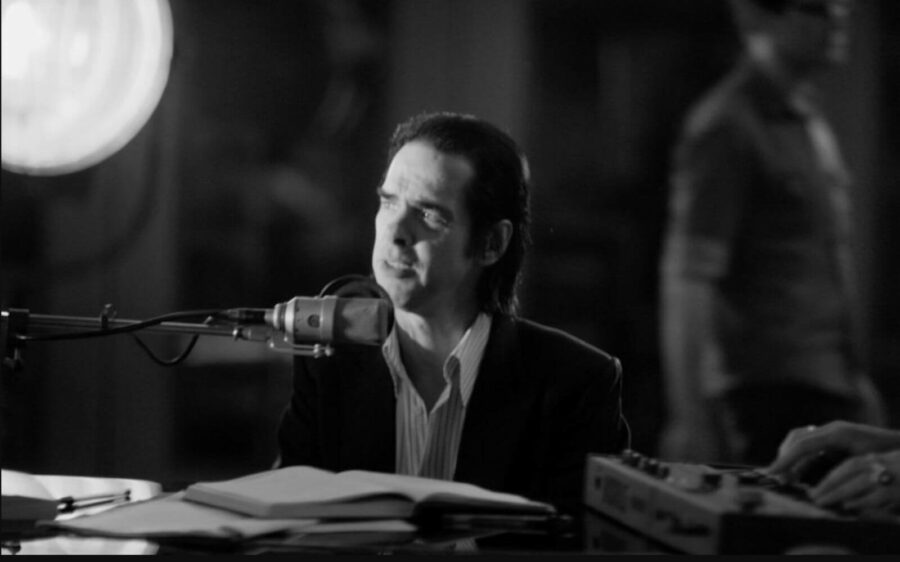By Prabhjot Bains
Director Celine Song's follow-up to Past Lives is a beautifully modern take on the classic love triangle.

There’s a lot of content. And there’s a lot of places to watch a lot of content. Fubo and Pluto and Philo, Vixen and Comet and Cupid. They’re multiplying, merging, and shapeshifting. HBO is a name of the past, Netflix doesn’t want you using your parent’s account, and Tubi now has originals. There’s so much to consume and so little time it’s hard not to lose your appetite. RANGE is here to help (or perhaps make things a little more confusing) by sliding some of our MUBI picks down the table.
MUBI prizes quality over quantity. Their curators scour film festivals for unsung auteurs and comb the archives for forgotten gems. The platform’s small selection of essential viewing changes frequently, so options stay fresh.
MUBI’s music program, TURN IT UP: MUSIC ON FILM, contains A-sides — Academy Award winning doc Amy (Asif Kapadia) and star-studded biopic Blaze (Ethan Hawke) — as well as B-sides — spectacular Senegalese drama Félicité (Alain Gomis) and beloved Argentinian director Lucricia Martel’s North Terminal. TURN IT UP has it all: documentaries, biopics, music-infused fiction, concert films, compilations, and shorts.
Our favourite films from this special collection showcase those rare music films where the filmmaker’s craft is harmonious with that of the musician, and where the cinematic language engages in a dialogue with the artist in a way that changes your understanding of their work.
Stephen Nomura Schible (U.S.A., Japan, 2017)
A mosaic of the late composer’s oeuvre, philosophies, and practices. Ryuichi Sakamoto welcomes Japan-born Schible into his home and his heart, as he embarks on making what would be his second to last album, async, after recovering from stage three throat cancer. The camera trails the intrepid artist as he forages the wilderness with his recording equipment, capturing the found sounds that have captured him. It patiently zooms into Sakamoto’s ear, while the soundscape plays directly from his microphone, so that we hear with him. We immerse in his process and experience the world through his senses.
Danny Cohen (Australia, 2021)
The most recent addition to TURN IT UP’s roster, Anonymous Club paints less of a portrait of Courtney Barnett’s music as it does of her mental health. In 2018, filmmaker, friend, and collaborator Danny Cohen asked Barnett to keep an audio diary: short voice memos recorded on analog Dictaphone addressed to him, so that she was alone yet in conversation. Not one to shy away from difficult subjects in her music, her private thoughts seem saturated by depression, detachment, and doubt. Cohen layers Barnett’s musings atop gorgeous 16mm shots of her stopping points along a three-year world tour – interiors filled with light from windows, like her inner life pierced by the external world. He’s quite right to describe this film as “the antithesis of a rock biography,” and it shouldn’t be missed.
Andrew Dominik (U.K., France, 2016)
A shock of black and white cinematography. A marvel of kaleidoscopic camera tricks. But at bottom: bare emotion. In 2015 Nick Cave lost one of his twin sons, Arthur, aged 15, when he fell from a cliff near their home. Though Cave began his 16th album, Skeleton Tree, before the tragedy, he recorded it in its wake. For mysterious reasons, he welcomed a camera crew into the studio, where he unspools his pain through music. One More Time With Feeling features full songs, some poems and the Bad Seeds’ production process. But it also carves out the space and time for Cave to just talk. And he generously shares his insights, sharpened by the piercing clarity that accompanies grief.
Andrew Tucker, Ray Sagbini (Colombia, 2013)

The Accordion’s Journey opens with a legend: long ago a ship full of accordions bound for Buenos Aires inadvertently washed up on Colombia’s shores. This transatlantic accident birthed “Vallenato” music and set an unexpected course for the island nation’s folkloric traditions. Follow a trio of musicians and self-proclaimed soulmates through a camcorder’s viewport as they compete in a string of music festivals and travel to Trossingen, Germany, the birthplace of their favourite accordion, to perform with a legendary accordion orchestra. A humble film full of grace.
Bill Ross IV, Turner Ross (U.S.A., 2016)
A world you didn’t know you didn’t know: Colour Guard. Luckily David Byrne stumbled upon the sport — a combination of synchronised dance, rifle tossing, saber twirling, and flag spinning, often performed during half-time shows — and decided it deserved a wider audience. He asked his favourite musicians, including St. Vincent, Devonte Hynes, and Nelly Furtado, to write original songs for the top high school Colour Guard teams to take to nationals. The culmination of these creative unions were performed at the Barclay Centre in 2015. The Ross Brothers make Contemporary Color so much more than a concert film. They weave footage from backstage, rehearsals, and competitions into the live show with the same synchronization of a Colour Guard athlete.
By Prabhjot Bains
Director Celine Song's follow-up to Past Lives is a beautifully modern take on the classic love triangle.
By Stephan Boissonneault
Martin Bourboulon’s sexy new series serves up the soul of France on a platter and we’re already hungry for more.
By Stephan Boissonneault
Cassandra Angheluta embraces trauma and transformation on her debut album, There’s A Shadow In My Room And It Isn’t Mine.